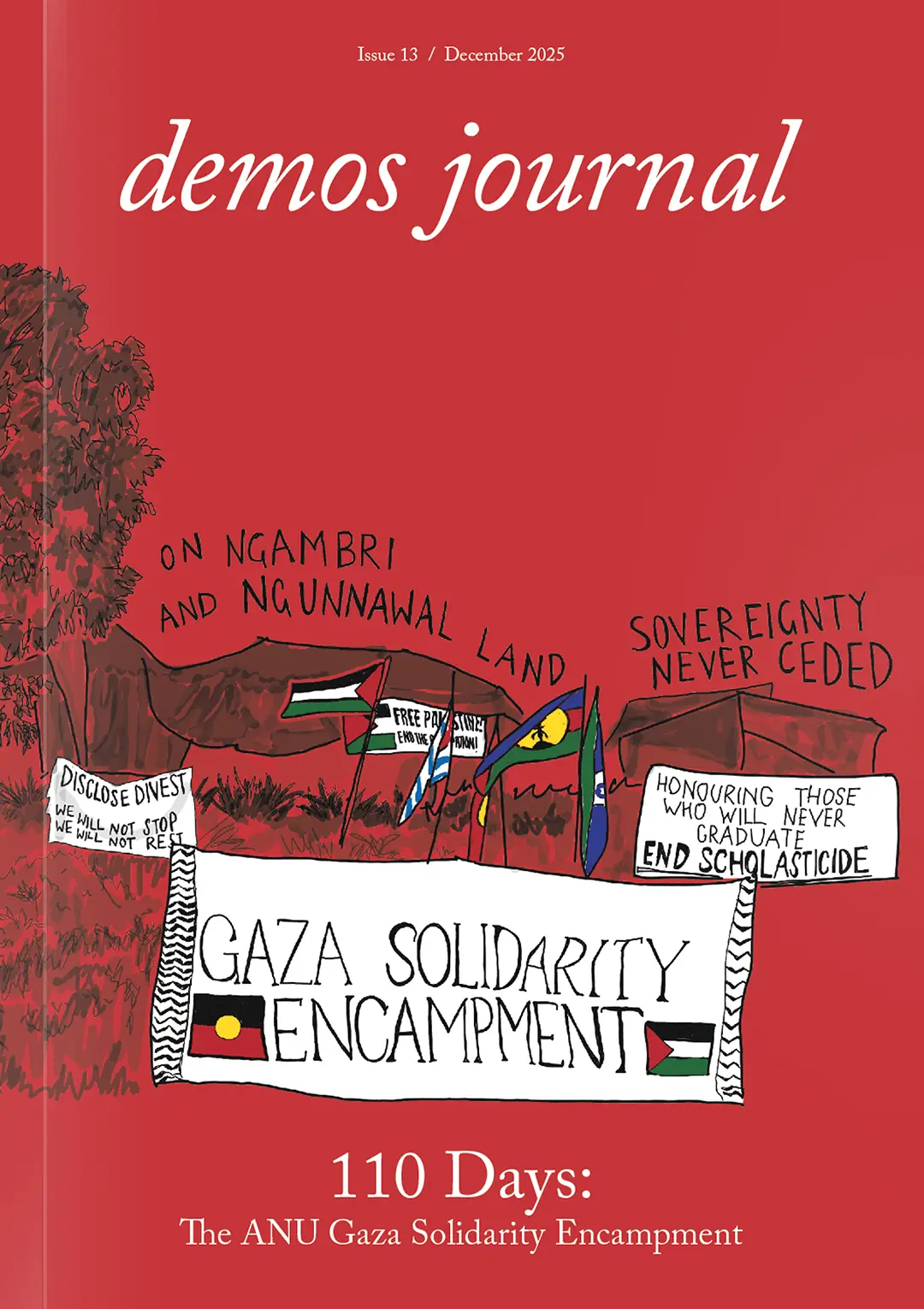


demos journal acknowledges the Ngambri and Ngunnawal people on whose lands this journal is made and imagined. Sovereignty of these lands was never ceded. Always Was Always Will Be Aboriginal Land.
enter

demos journal is a volunteer-run progressive journal for emerging writers based on Ngunnawal and Ngambri land (Canberra). Originally formed and guided by our understanding of the need for a democratic response to climate change, we publish critical and creative writing and art addressing the climate crisis, capitalism, Indigenous politics, refugee justice, ecology and higher education.
Read more about us